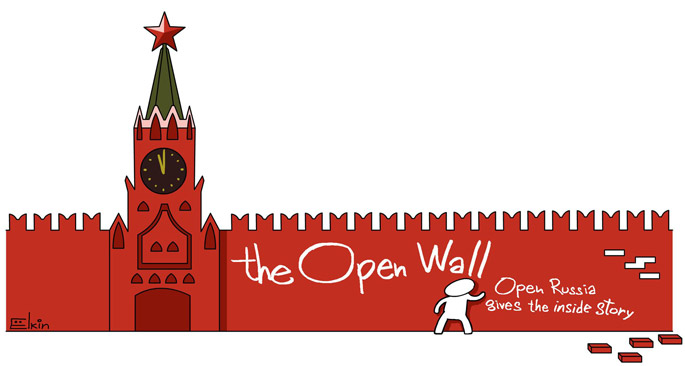Made in Chinese Russia
Made in Chinese Russia
The present Russian government has a special relationship with history. Some anniversaries which fit the political mood of the moment, the general ideology or simply the whim of the president, are celebrated with unbearable pomposity and toe-curling official kitsch.

But the Kremlin is skilled at concealing the history that is happening right now, as if nothing much is going on at all. The logic is very simple: “big” historical events are not under the control of officials from the presidential administration, so they have to be ignored. In this way, we have learnt how to wage war with neighbouring states, while pretending that we’re not. For the first time in twenty years, Freedom House last year classified the Russian Internet, or Runet, as completely lacking in freedom, but who noticed?
The recipe is very simple: you move forward very gradually, sometimes putting out false information, and watching for the reaction – but, most importantly, you overload everything with bureaucratic chatter and clerical baloney.
The Chinese threat, for instance, has been used to scare us for several decades – that at any moment they were about to sweep across the border – but it was only by chance that on 9 April, journalists uncovered the quite possibly historic announcement (in a small press release hidden away on the site of the regional ministry) about China’s latest export initiative – of its smokestacks to the Russian Far East.
From this press release it was obvious that Alexander Galushka, minister for the development of the Russian Far East, had actually signed the agreement in December – and not just for one or two Chinese factories. The document lists twenty sectors of industry earmarked for cooperation – from metallurgy and communications to chemicals and cement.
Officials justify this step by saying that we are working with other countries in the Pacific region, and everything fits in with the logic of economic zones and the so-called “priority development territories” in the Far East. It also creates employment (for the moment there are quotas: no more than 20% of Chinese can work at each enterprise). And they emphasise that the factories can only operate if they are fully compliant with Russian environmental law.
All fine words and trickery.
Firstly, according to environmentalists, many dangerous chemical substances, which are used in Chinese factories, are simply not subject to regulation in Russia, so using them will not be breaking the law. “This means that if Chinese production facilities are moved here, it’s our air and our rivers that will be affected by these substances, the effluents and the emissions,” explains Greenpeace Russia.
Secondly, strange as it may seem, environmental law in China is currently harsher than in Russia. Chinese law was changed only two years ago when the air pollution started to cause real alarm in the country. The current annual mortality figure relating to this pollution is 1.6 million, the smog levels in 40 cities are ten times higher than permitted by international norms, and so-called “cancer villages” are appearing near factories in rural areas.
Bloomberg reports that the Beijing decision to “export” many of the smokestacks was taken in autumn 2015. One of the Chinese government’s new policies is to ensure maximum industrial loading in the northern provinces like Hebei, where more steel is produced than in the whole of the USA. This province currently has seven of the most polluted cities in the country.
In November 2015, Western and South Eastern Asia were under discussion, as was South Africa, as possible smokestack relocation areas. But then the Russians turned up with their attractive offer – so much easier just to move factories over the Amur River, rather than across the Indian Ocean. Many experts have pointed out that this would simultaneously solve China’s problem of over-production: when the economy is not growing as it was before, by 10% a year, there is simply no need for so many factories.
Something else, which is hard to believe, is that Russian wages are currently some 15-20% lower than Chinese. Living standards have considerably increased in China over recent years: workers in assembly plants are paid 300-500 USD, for instance. Rates are similar, sometimes slightly higher, for agricultural workers. For Russians, devaluation has meant that not even white-collar workers can rely on that kind of income.
There are, of course, other, cheaper options. In India, for instance, workers’ wages are less than half that of China, and three times less in Vietnam. But Russia is nearer.
So no, this is not the Chinese expansion that we used to be so frightened of – there will be no tanks crossing the border. We are becoming for China what China was for many years for the West – a low-cost manufacturing location with none of the annoying hindrances to making a profit, things like workers’ rights and strictly-enforced environmental standards.
In Russia in 2015, real wages declined 10% thanks to the collapse in the price of oil, a weak rouble and Western economic sanctions. This March, for the first time since 2008, Russians spent more than half their income on food, beverages and cigarettes, according to government statistics. Which explains why, in a globalised world, we have become an export destination not for high-value consumer goods and technological investment, but other countries’ smokestacks.
Not something the government will be parading this coming May 9th.




